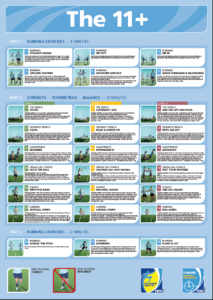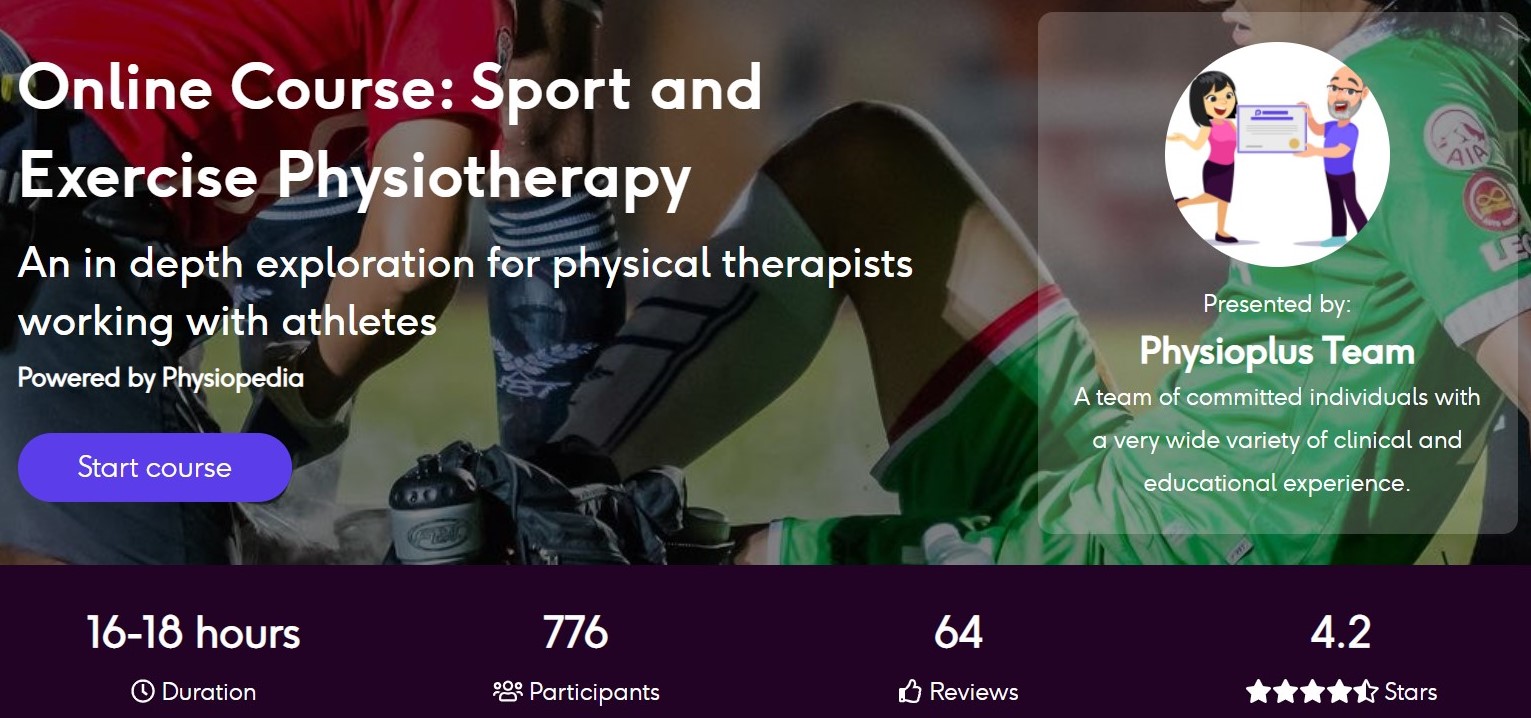Does the FIFA 11+ warm up protocol reduce the injury severity and incidence in football players?
Football players have a rate of injury which differs depending on age and level of participation but it is estimated to range from 2.5 to 48.7 injuries per 1,000 hours of competetive play. Therefore effective injury prevention strategies are important tools for coaches at all level of the game.
The most common injuries occur in the lower extremities with sprains, strains and contusions the most common type of injury sustained by players. Many studies have investigated strategies to reduce incidence of injury and this culminated in the creation of protocols to provide standardisation and structure to the approach taken by coaches.
Deep Dive into Sports Physiotherapy
There are a number of different warm up protocols used around the world with one of the most commonly adopted being the FIFA 11+. A new study published in PLoS One aims to evaluate the impact of the FIFA 11+ warm up programme on the incidence and severity of injuries in footballers. With particular focus on inexperienced youth players in a new league without prior knowledge of the FIFA 11+ protocol.
What is The Fifa 11+ Warm Up?
The FIFA 11+ warm up protocol is a multi-component football specific injury prevention programme which was developed by a group of experts comissioned by FIFA. The aim of the protocol is to reduce the intrinsic risk factors of injury and is based on evidence which recommends footballers take part in strength, balance, co-ordination and plyometric exercises to reduce overall injury rates.
The programme is composed of 15 exercises broken down into three components which should take place at least three times a week:
- Slow running and dynamic stretching
- Six sets of leg and core exercises with three levels of progression
- Running drills with increased speed and direction changes.
So far there has been four RCTs investigating the effectiveness of the FIFA 11+ protcol with one systematic review pooling the results together. Result are promising with a reduction in injuries by 39% and to be more effective than the previous FIFA 11. However these studies were inconsistent with their defintion of injuries and duration and took place at recreational and sub-elite levels and more studies were recommended particularly from different countries.
Methods & Demographics
The study is a cluster randomised controlled trial which was approved by the University of Cape Town and took place with 630 players from 24 teams which play in the Rwandan second division. The players were divided into two groups, 309 in the intervention group and 317 in the control group.
The control group used their teams usual warm up protocols and the intervention group used the FIFA 11+ soccer specific warm-up programme during training and matches at least three times a week over the seven month season. The mean age of the players was 20 years old and on average players had 3 years playing experience so would be classed an novice players.
Learn to Manage Tendinopathy in Season
The primary outcome of the study was the overall incidence, severity, definition, severity, mechanism of action and location of training and match injuries. Training information was captured using a standardised training exposure registration form creates by FIFA, match data was also captured using a FIFA standardised form and injury data was captured by team medical personnel using FIFA and Olympic standard processes.
 For example an injury is defined as any physical complaint that resulted from soccer participation whether in training or match. It does not necessarily mean that there is a need of medical attention. The severity of injury was classified according to the number of days of absence from full soccer participation due to injury. Injuries that resulted in an absence from training or matches for 1–3, 4–7, 8–21 and more than 21 days were classified as “minimal”, “mild”, “moderate” and “severe” injuries respectively.
For example an injury is defined as any physical complaint that resulted from soccer participation whether in training or match. It does not necessarily mean that there is a need of medical attention. The severity of injury was classified according to the number of days of absence from full soccer participation due to injury. Injuries that resulted in an absence from training or matches for 1–3, 4–7, 8–21 and more than 21 days were classified as “minimal”, “mild”, “moderate” and “severe” injuries respectively.
None of the coaches in the control group were familar with the 11+ warm up and recieved basic frist aid and emergency procedure training on day one of the study. The experiment group recieved full FIFA 11+ training from an instructor recognised by the Confederation Africaine de Football. Details about both control and experimental coaches training can be found within the article.
Clinical Importance
In total players who participated in the FIFA 11+ protocol group completed 61,043 hours of training and 4,290 match hours. The control group completed 59,165 hoursand 4, 224 match hours. Players in the intervention arm had markedly more training hours than those in the control arm which is likely to have influenced injury and fitness rates.
Looking at injury prevention the teams using the FIFA 11+ protocol 163 players (52%) sustained injuries where as in the control group 200 players (63%) sustained injuries. The majoirty of players in both groups sustained single injuries but the control group sustained over twice the number of multiple injuries per player per season.
“Overall players using FIFA 11+ lost 40% less days due to injuries compared to the control group (1-84 days vs 1-153 days).”
There wasn’t a significant reduction in training injuries but there was a significant reduction in lower limb injuries sustained by the intervention group (37% vs 45%). There was also a lower risk of traumatic injuries sustained in contact in the teams using FIFA 11+.
Overall players using FIFA 11+ lost 40% less days due to injuries compared to the control group (1-84 days vs 1-153 days). There was also a reduction in the rate of moderate and severe injuries in the interventon group.
The overall, training and match incidence rates were all significantly lower in the intervention group, with an 11% reduction in the overall number of injured players and a mean reduction of time off play by six days, compared to the control group.
In terms of limitations of this study if an external healthcare professional assessed and examined the injuries of both teams bias may have been reduced as the coaches and medical staff of the teams were not blinded to the intervention.
